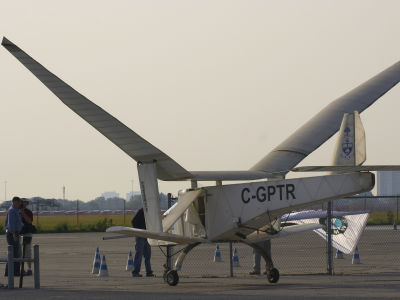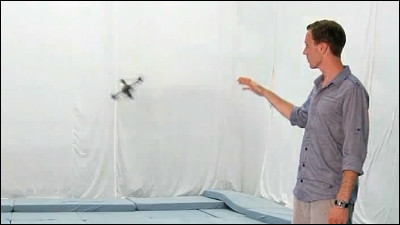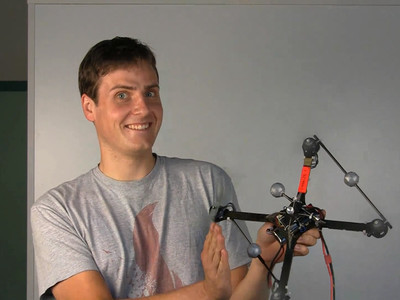Quad rotor movie making formation flight like space invaders
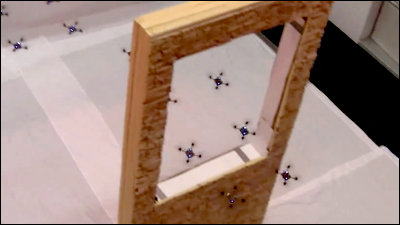
The helicopter is equipped with a large rotor blade at the top of the fuselage, but when installing four rotor blades on the fuselage, "Quad rotor"(Quadrotor, quadrocopter) will be what is called. Currently, this control technology is evolving slowly, and at the University of Pennsylvania it has been successful to let the flight flight like a space invader.
A Swarm of Nano Quadrotors - YouTube
This movie is from the University of PennsylvaniaGRASP LabThose members shot. GRASP is an acronym for "General Robotics, Automation, Sensing and Perception", and laboratories are conducting research on robotics engineering, electrical engineering and mechanical engineering.
First of all, holding one machine in hand ......
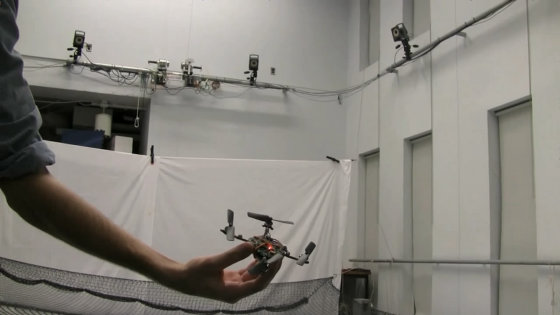
I throw it to a distance far away.
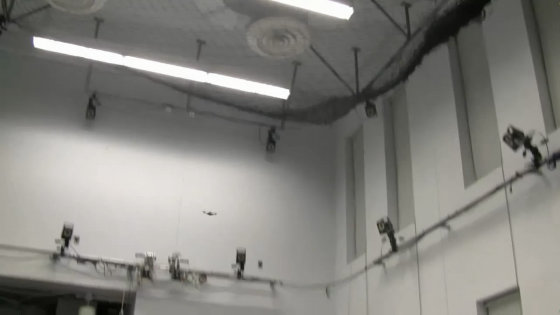
The aircraft automatically balanced and returned to hand like a boomerang.
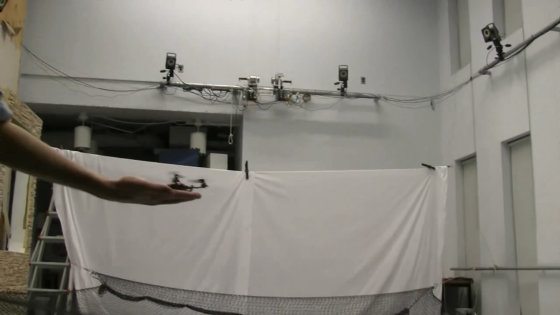
Cooperative flight with two aircraft. This neighborhoodThe IDSC of Zurich Institute of Technology also reachedBecause it is not so surprising.
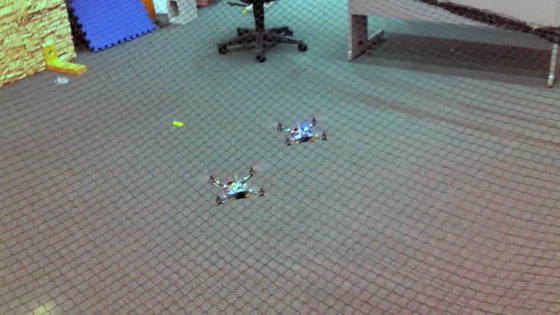
Formation flight is from here. First of all, flying with 5 aircraft.
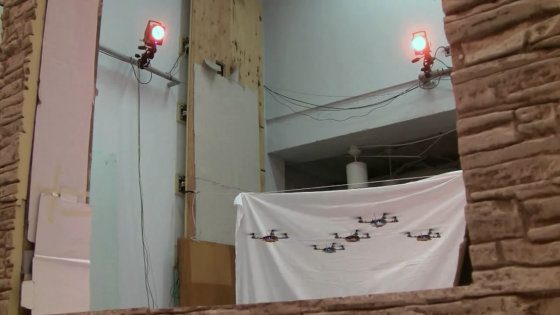
Cross the narrow gate part.
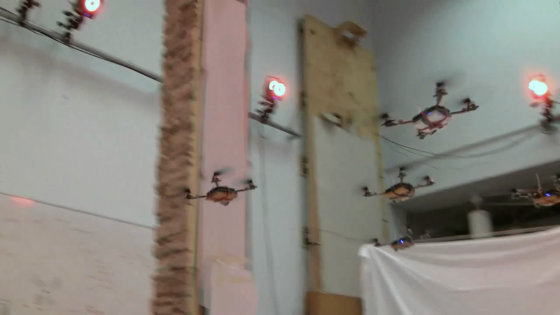
Flight formation flight with 20 aircraft. It's pretty creepy if you come close to us.
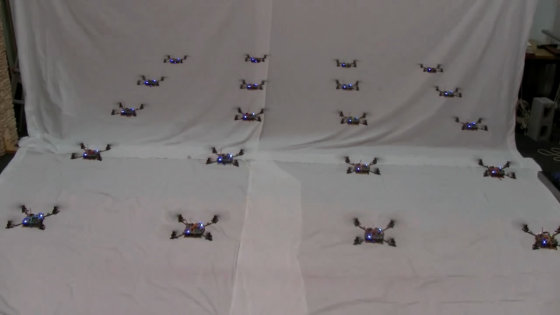
Landing slowly.
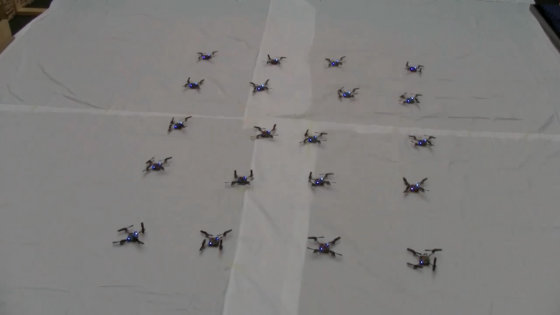
Next time……
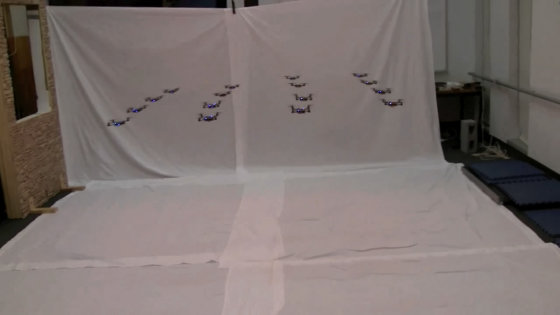
Formation change. I am taking formations like three-dimensional staircases.
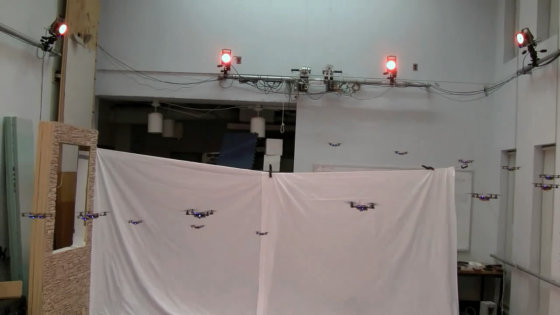
I will change the formation further from there.
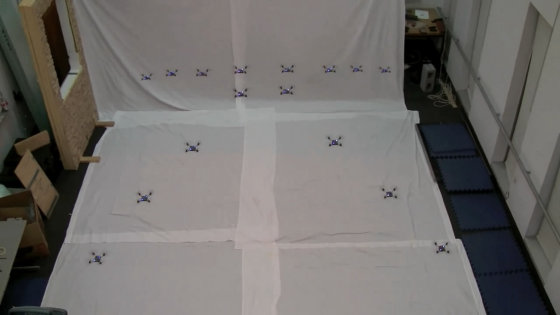
From the side, you can see how three-dimensional formation changes are taking place.
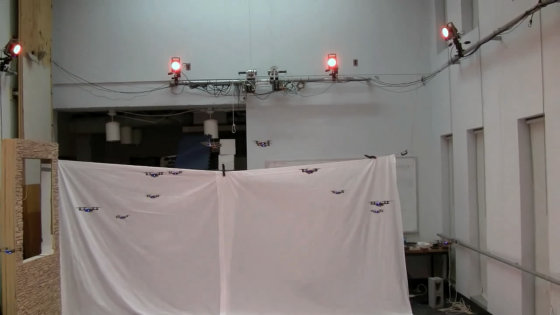
Flight formation flight divided into teams this time.
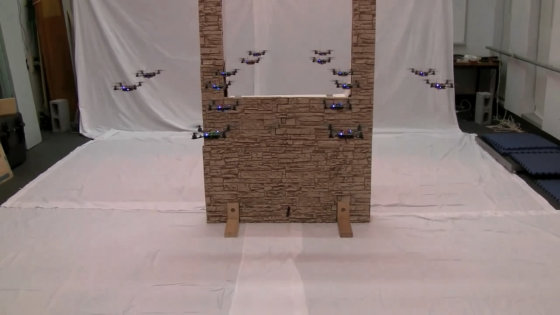
We are forming one team with four aircraft.
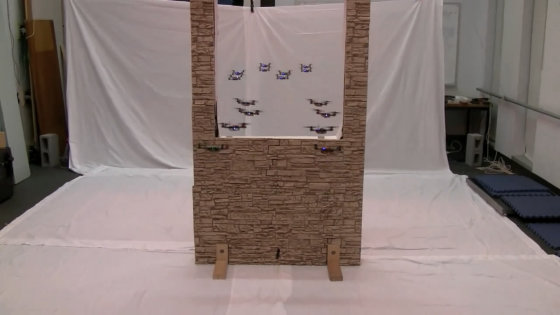
And finally the 8 character flight. It is not a different ring in front and back, but it continues to fly without interruption while slipping through each other.
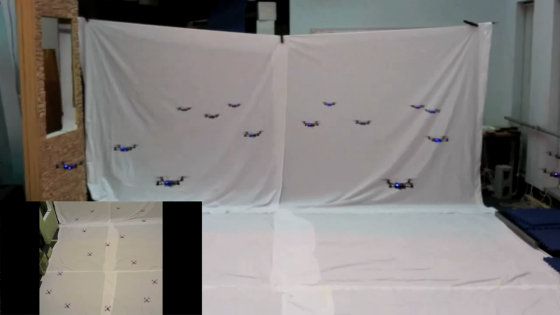
Lastly I decided with a smiley mark.
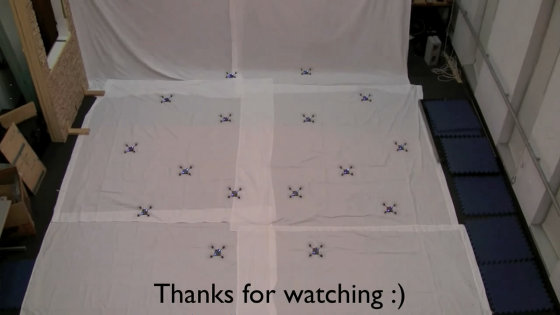
By the way, at Zurich Institute of Technology, it seems that doing things like stacking boxes using quad rotor. If we combine both technologies, will quad rotor be able to freely make things ...?
Flight Assembled Architecture / Architectures volantes - YouTube
Related Posts:
in Video, Posted by logc_nt
